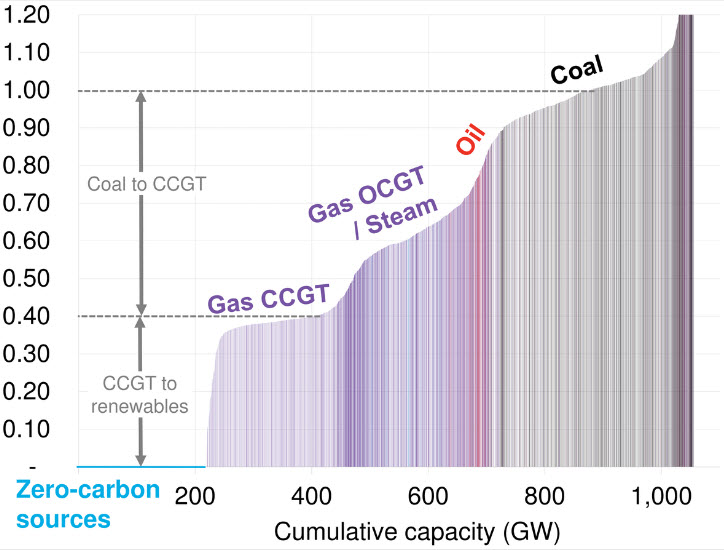This article first appeared on the BNEF mobile app and the Bloomberg Terminal.
- Carbon emissions are a factor for every U.S. power generator
- Coal-to-gas switch mitigates more CO2 than gas-to-renewables
U.S. power generators ranked by emissions factor (tCO2e/MWh)

Source: Bloomberg New Energy Finance
Economics, not policy, has been the most potent force in decarbonizing U.S. power generation. Power plants are dispatched in order of increasing short-run marginal cost. This upward-sloping supply curve (called a merit order) yields the cheapest energy, not necessarily the cleanest. The cleanest solution would arrange units based on emissions rate, as shown here. U.S. shale gas has re-arranged the U.S. grid to better align with Mother Nature’s merit order. Low prices have pushed combined cycle gas turbines in front of coal, saving 0.6 metric tons per megawatt-hour of carbon dioxide in the process. That savings is more than is mitigated by renewables in California, where solar displaces gas.
Clients can access the full report here.
BNEF Shorts are research excerpts available only on the BNEF mobile app and the Bloomberg Terminal, highlighting key findings from our reports. If you would like to learn more about our services, please contact us.